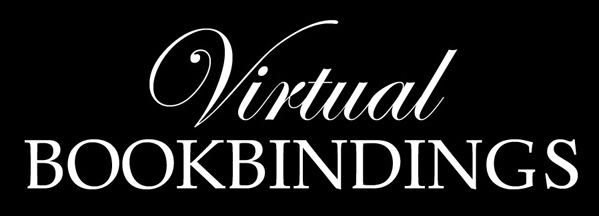

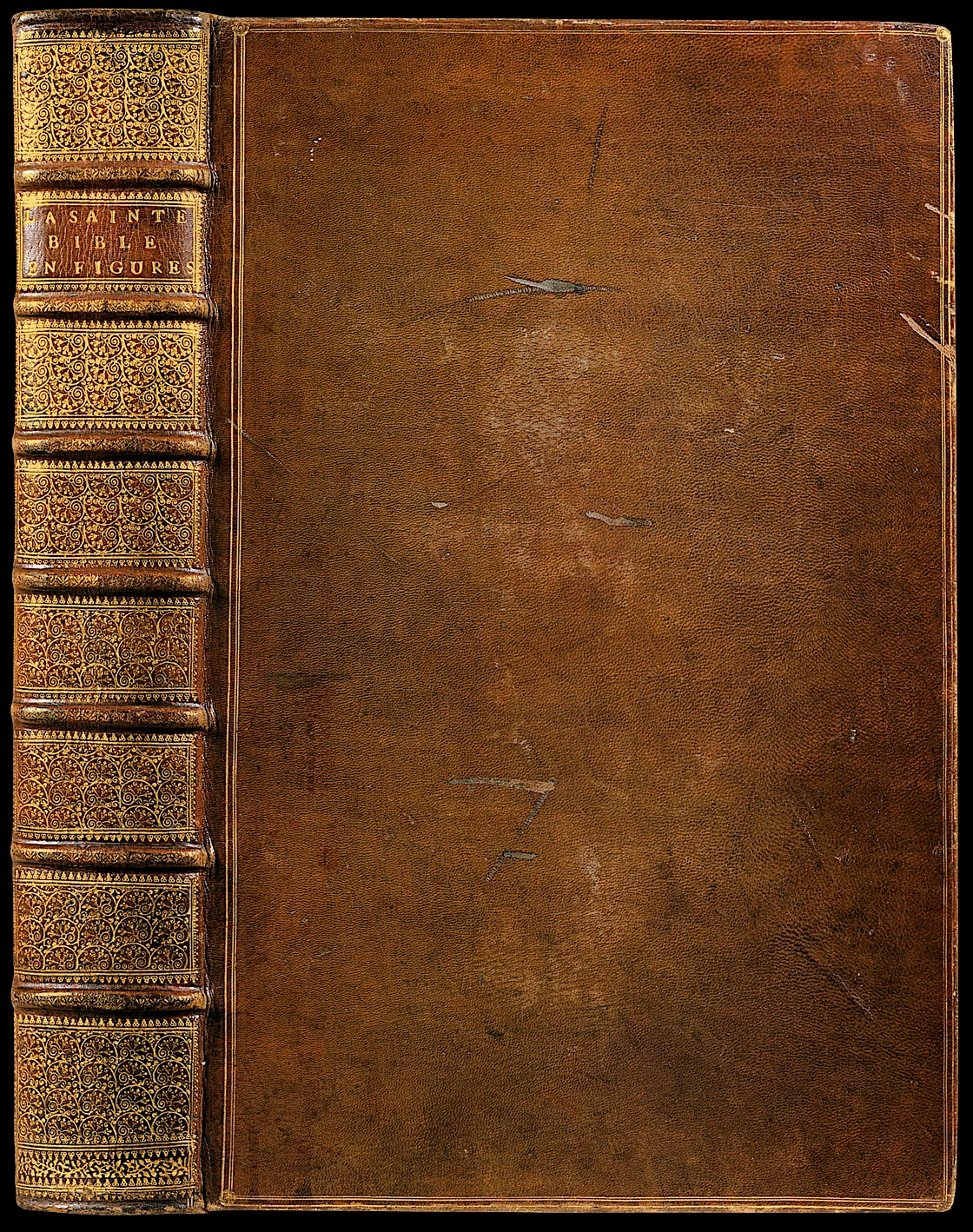
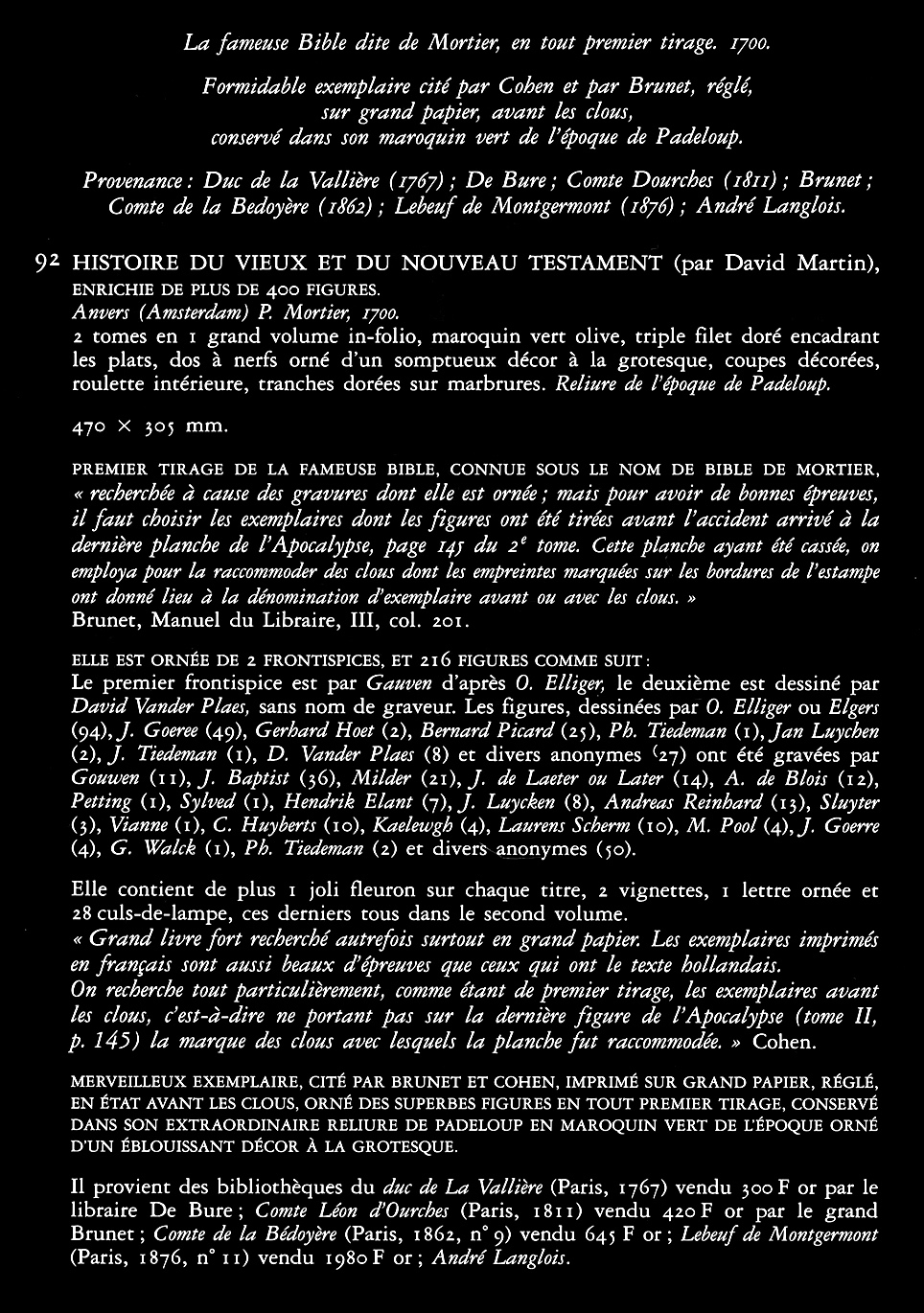
| The binding shown above is found in a 1999 LIBRAIRIE SOURGET - MANUSCRITS ET LIVRES PRECIEUX - CATALOGUE N° XIX, page 236, lot 92. The importance of this binding is due to its relationship to the critically important work of Jeanne-Marie Métivier in her paper entitled Luc-Antoine Boyet, relieur de l'Imprimerie royale (1704-1723 published in la Revue de la Bibliothèque nationale de France, numéro 12, 2002. Below I reproduce the final page of her paper in which she reproduces a Boyet grotesque binding |
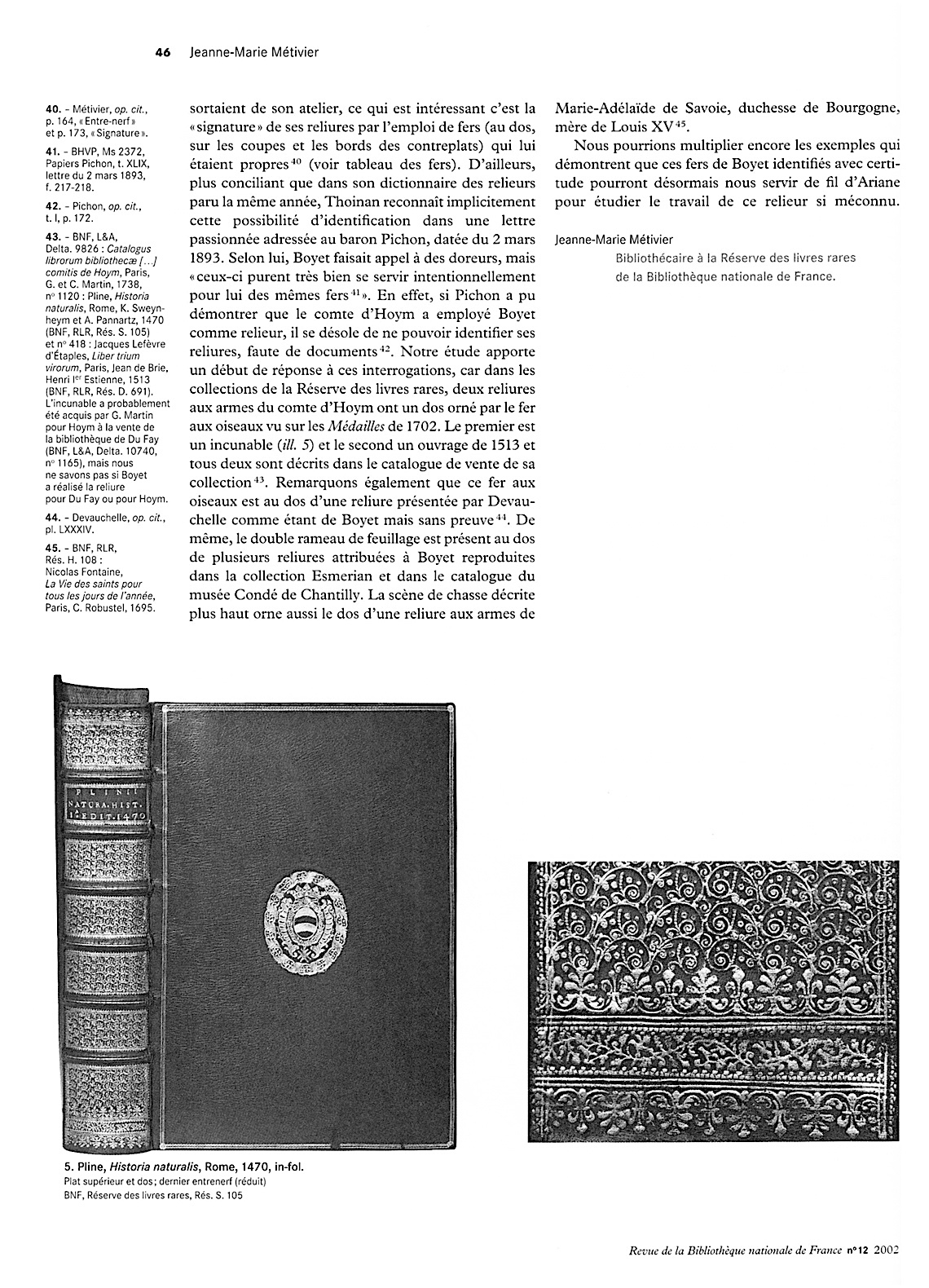
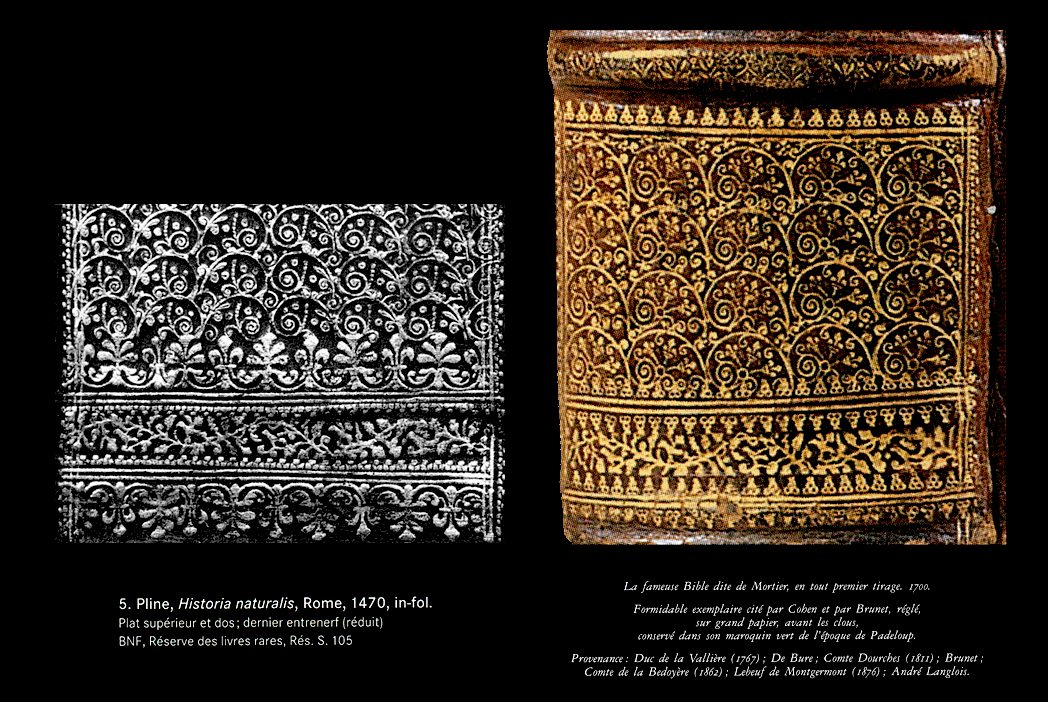
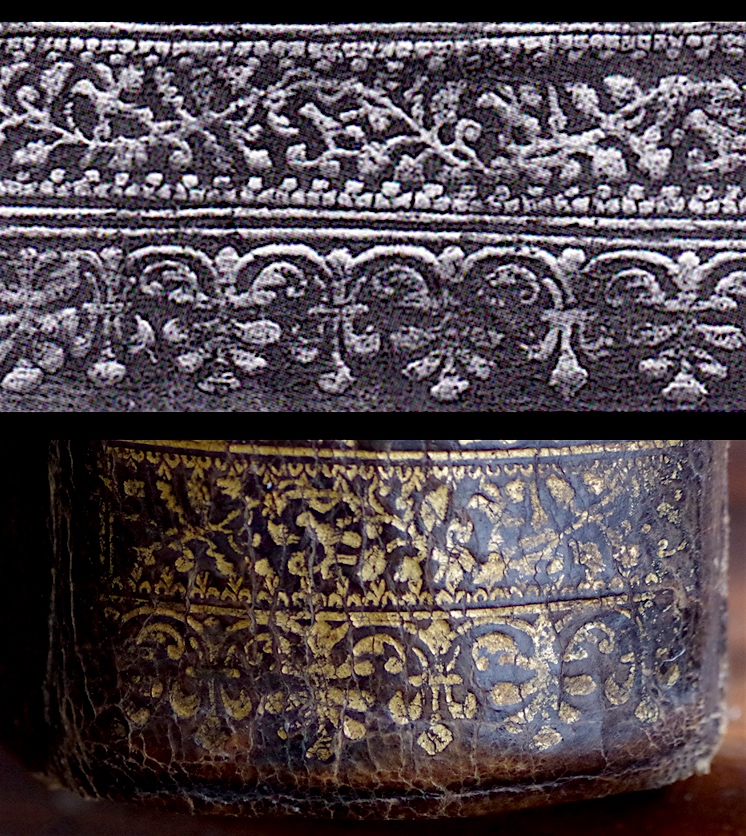
| On this page Metivier speaks of a fer aux oiseaux (palette XVII) that she shows in her illustration 5, she mentions that two examples of this fer are found on bindings that bear the armes of comte d'Hoym. In Comparative Diagram 1, I show that this same palette XVII fer aux oiseaux is found on the Mortier Bible shown at the top of the page, and in Comparative Diagram 2, I show that this is the same palette that we find on the 1698 Breviarium. |
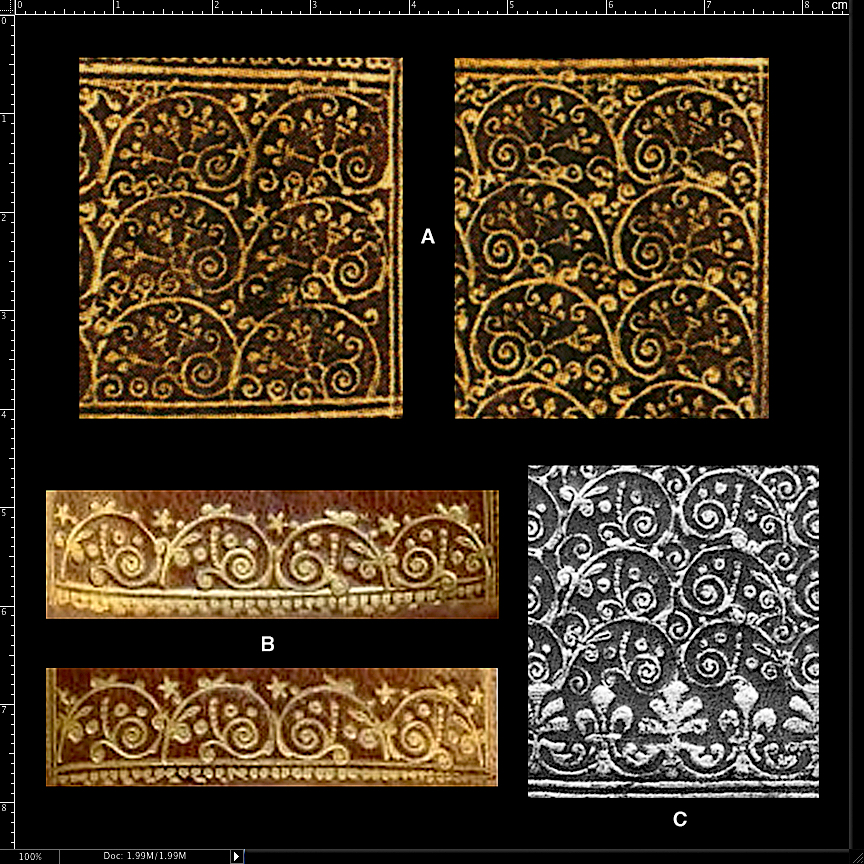
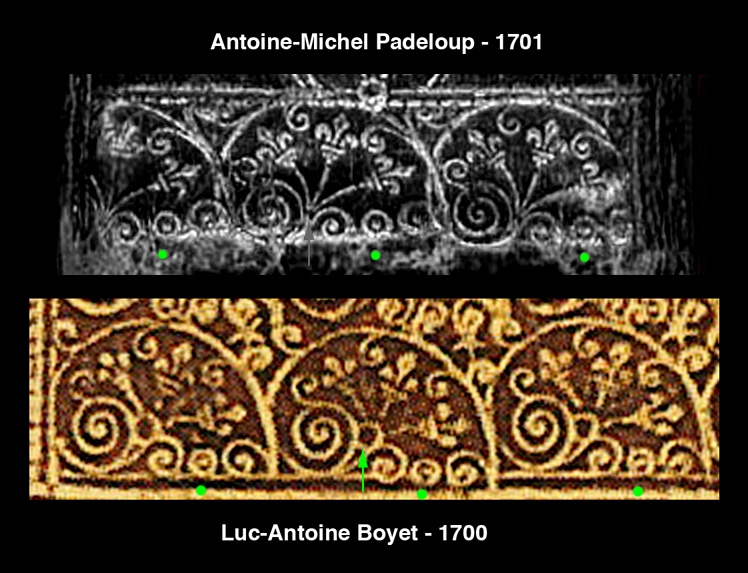
| In Comparative Diagram 3, I point out the important differences in these imprints, the 1700 Mortier Bible examples are rare, while I can find several examples of the Metivier style à la grotesque imprints. In Comparative Diagram 4, I show a remarkably similar Padeloup tool, with matching details. One wonders what was going on here, why do they have nearly identical copies of this particular tool? The green arrow is pointing to one major difference in the design of this motif. I am not sure whether Padeloup made spines à la grotesque with these tools. The Padeloup example shown is a simple row of three at the bottom of a spine serving as a sort of palette. |
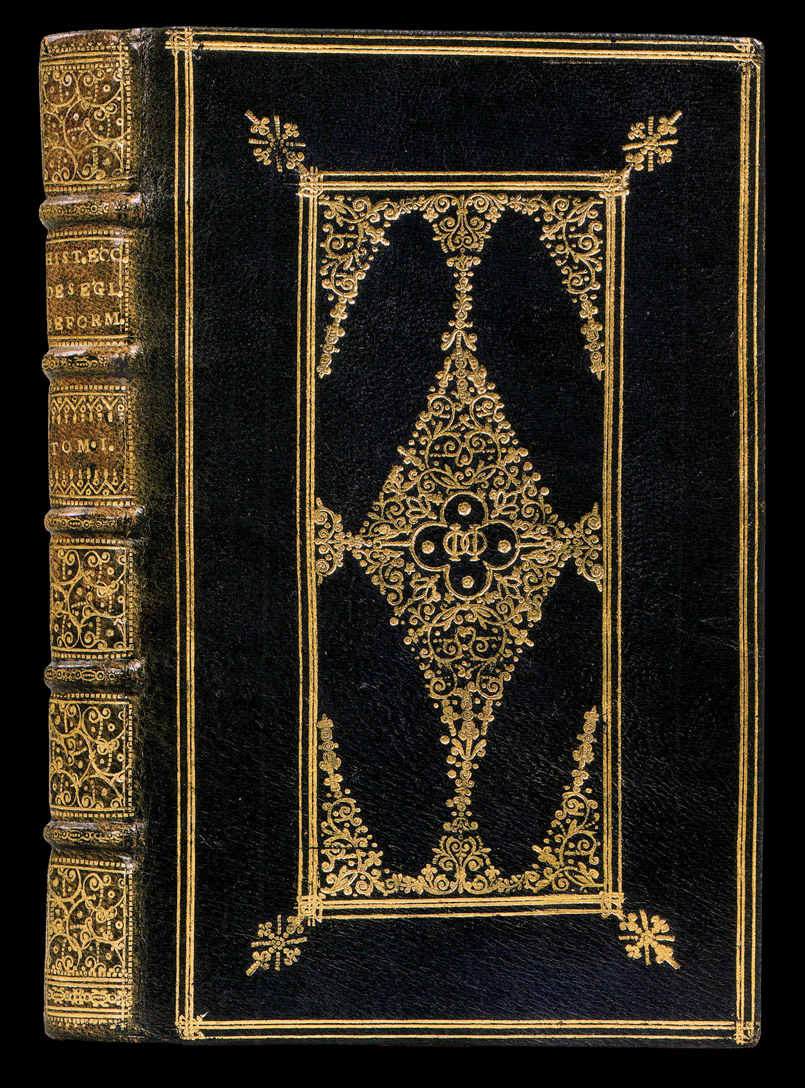
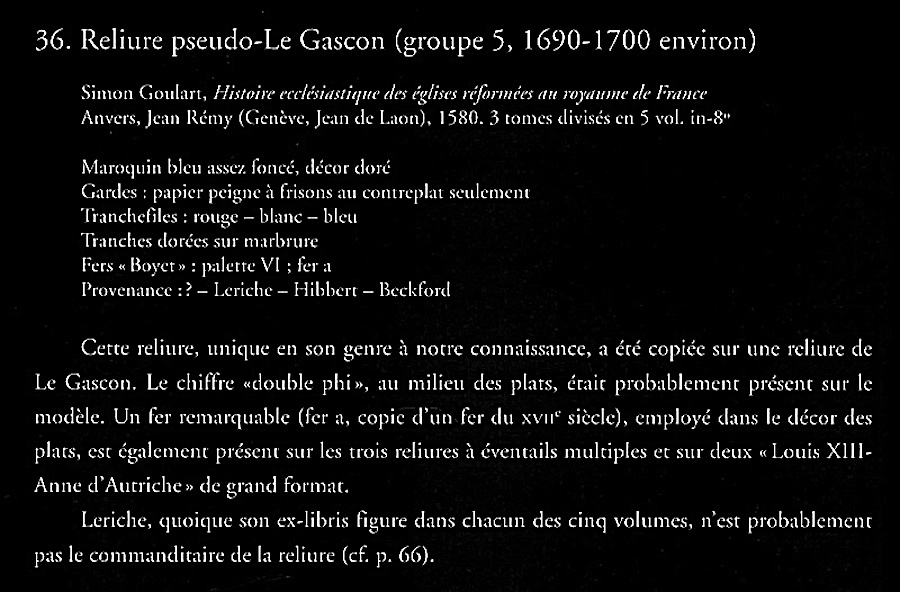
| I show above, another Boyet binding with the spine decorated à la grotesque. This is from Isabelle de Conihout & Pascal Ract-Madoux Reliures françaises du XVIIe siècle, by Paris, 2002. pages 86-87 Boyet binding 36, while below we see another binding from this same publication, binding 42 also with a spine à la grotesque. |
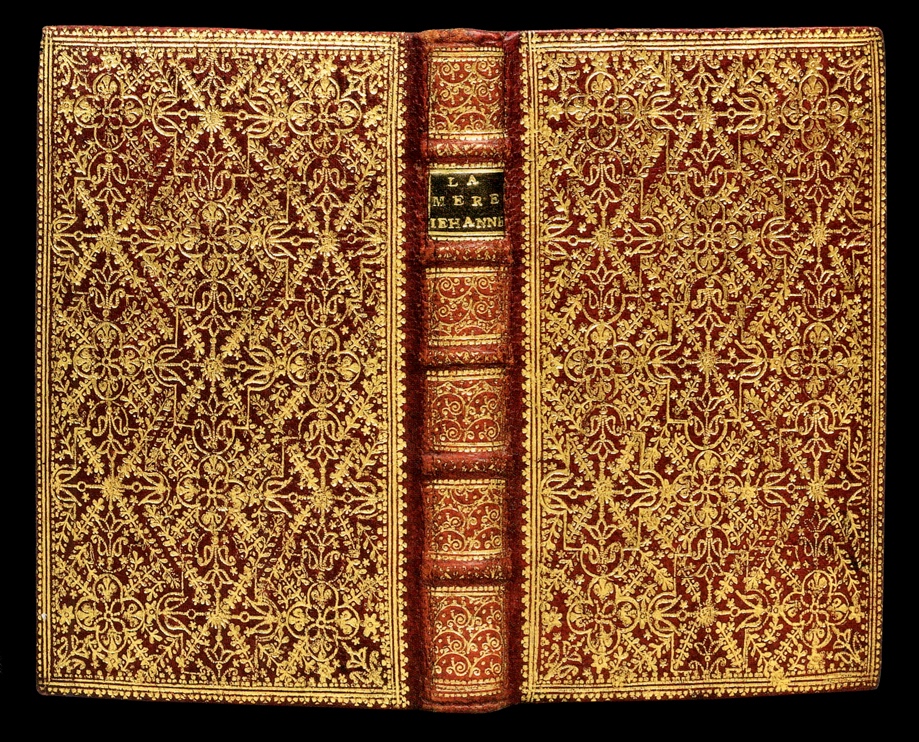
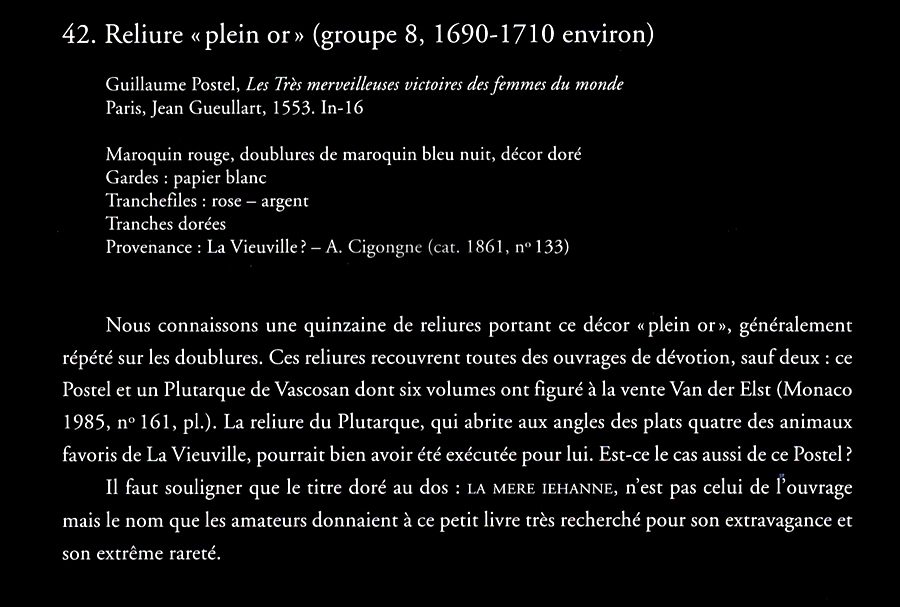
| According to Pascal Alivon, author of Styles et modèles: Guide des styles de dorure et de décoration des reliures ... Broché: 175 pages; Editeur : Artnoville (1990), "le tortillon apparaît au XVIIème siècle et est particulièrement utilisé sur les dos dits "à la grotesque". Le tortillon est en fait une courbe poussée à l'extrême qui devient une spirale, un tortillon." roughly translated... "the tortillon appears in the seventeenth century and is particularly used on the spine said to be à la grotesque. The tortillon is actually a curve pushed to the extreme that becomes a spiral, a tortillon. I think we can use this term to help us discribe this collection of Boyet's tools, even though in a 19th century catalogue of 17th century binders tools a "tortillion" covers a lot of ground. Thus in Comparative Diagram 5, I have tried to extract tortillion examples from the bindings shown above, the first example coming from binding 36 only shows one of the pair for this model. The second differs from the first by including an interior ring. The third example has three enclosures, a dot a ring and another sort of ring as well as 2 distinct curls sprouting at the side of the base and a lobe like leaf. The fourth example is distinctly different and will be easy to identify if you ever see one. The first three examples are not so easy to identify amongst many similar bindings. |
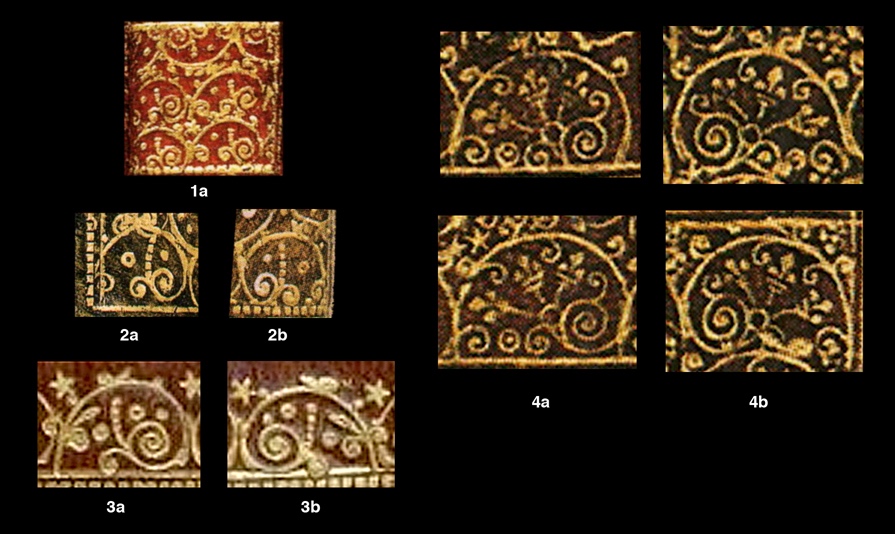
| Below I show a collection of 17th century tortillons from a 19th century catalogue, this is a very limited collection, if one was to include the pointille spiral tools this list would be much larger as each binder had his own spiral variation. We do not see anything here that matches the Boyet's tortillons shown above. |
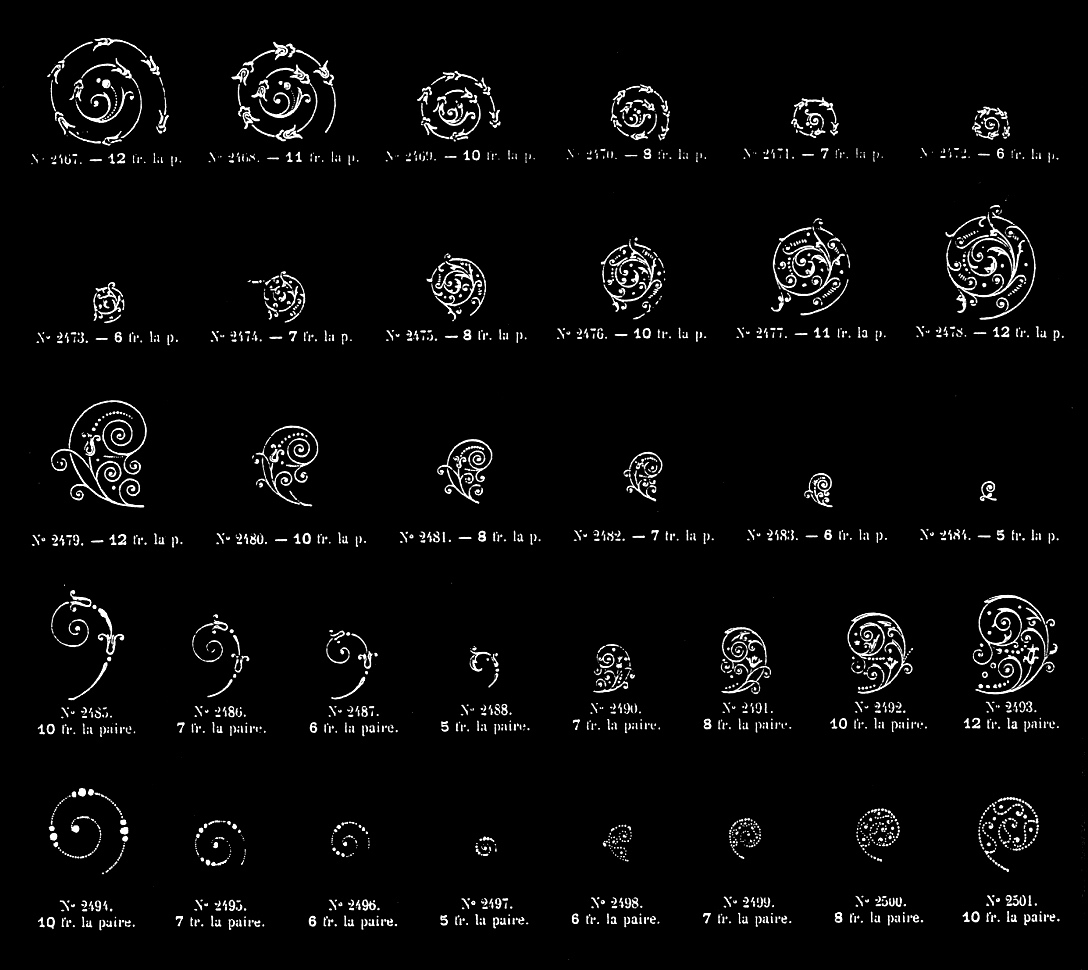
|
click here to return to the HOME page. click here to see an INDEX of the 2017 pages. see below links to previous work |
| Even experts are sometimes wrong, before you spend thousands on a book, please do your own research! Just because I say a certain binding can be attributed to le Maitre isn't any kind of guarantee, don't take my word for it, go a step further and get your own proof. In these pages I have provided you with a way of doing just that. |
| Virtual Bookings, created by L. A. Miller | return to the Home page of VIRTUAL BOOKBINDINGS |